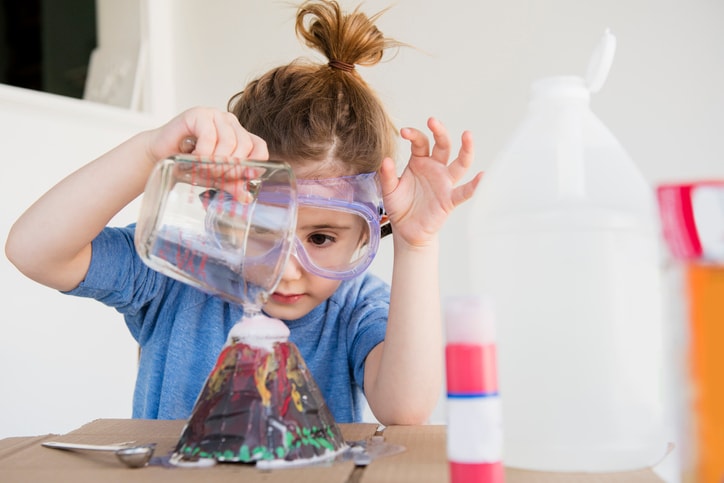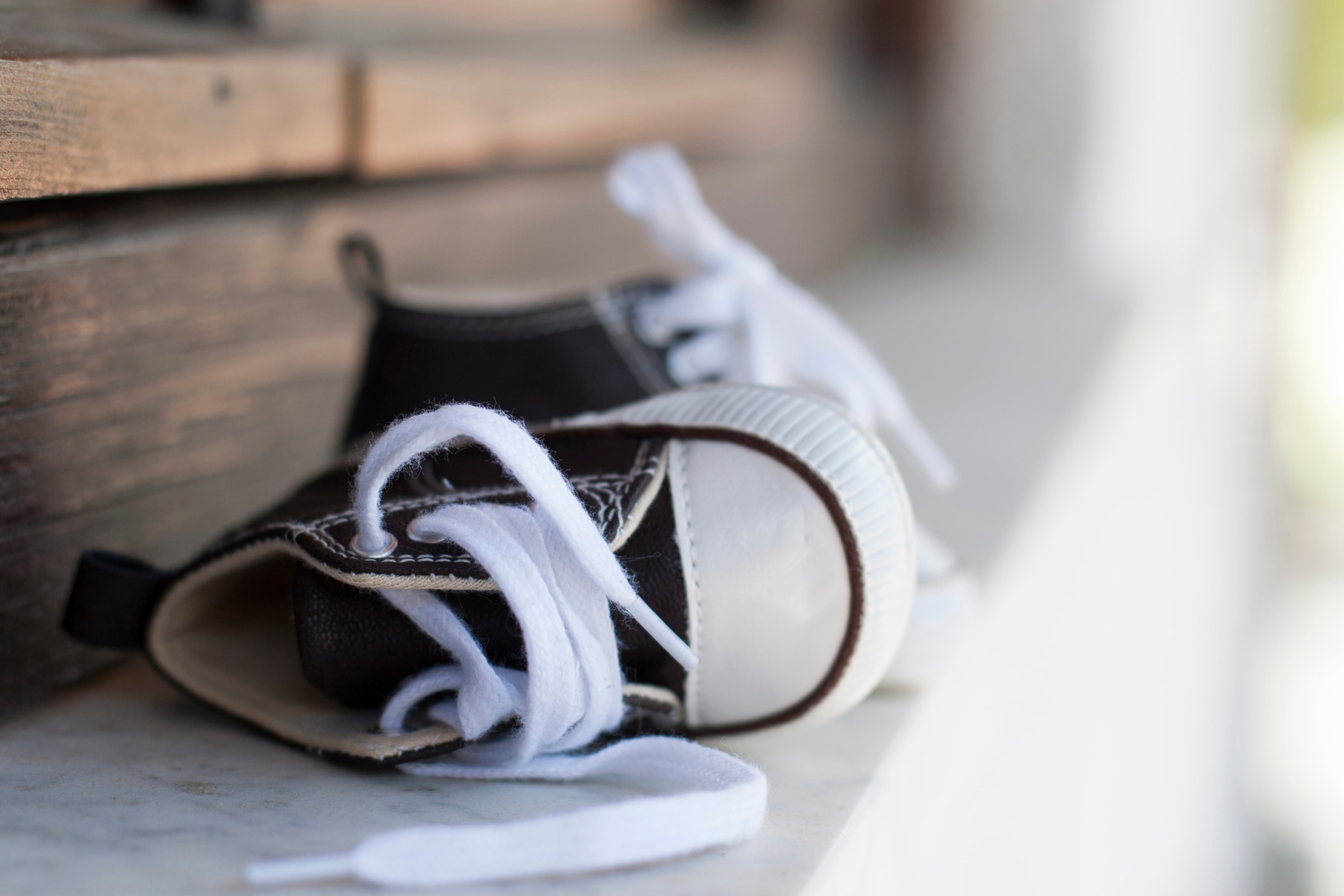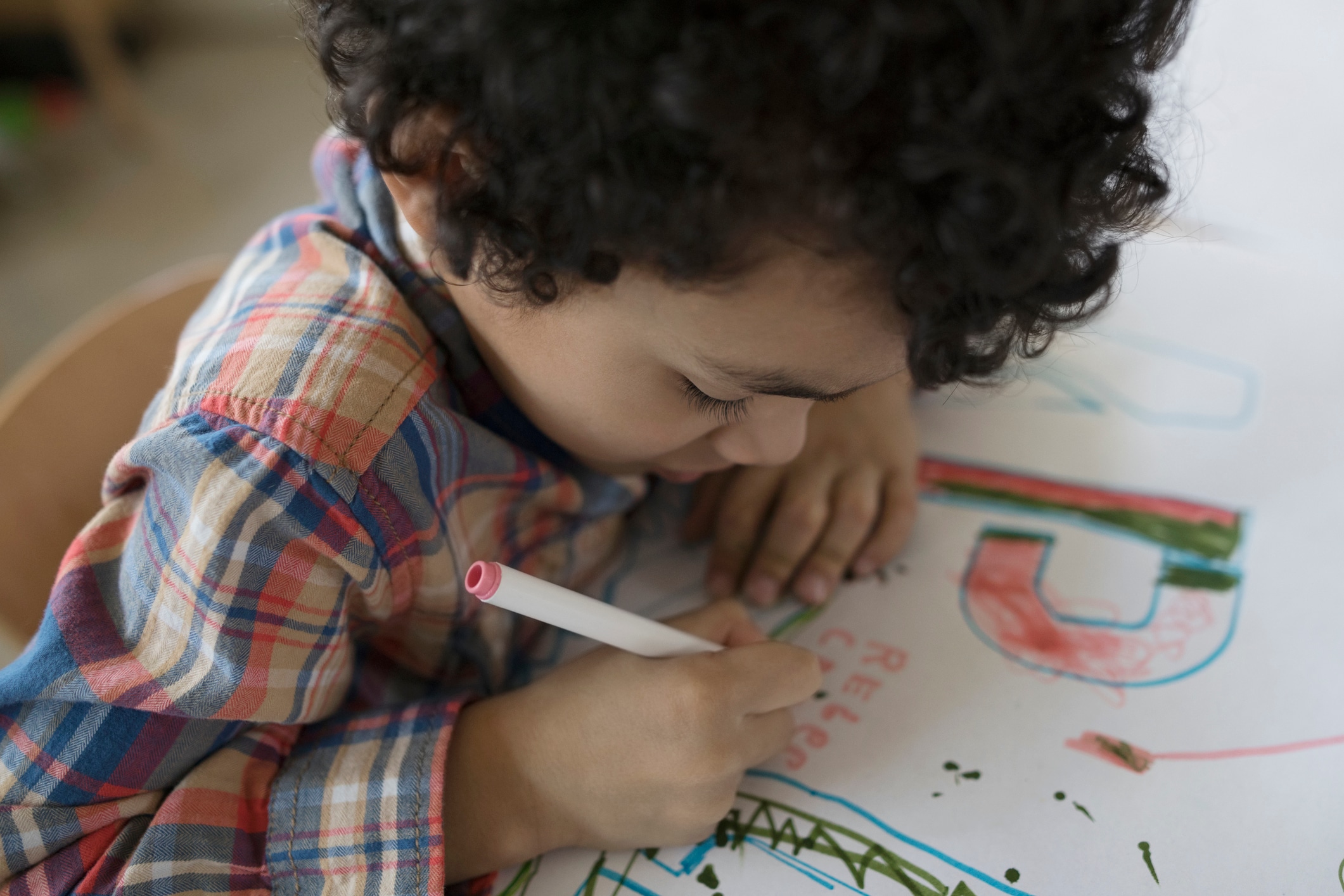If you’re looking an entertaining and educational project, a volcano experiment for kids provides a great opportunity for them to learn science basics while also engaging them with fun, hands-on learning.
“I will always swear by STEAM and STEM activities for kids of all ages,” says Dana Oliver, founder and president of Texas-based child care organization Adventure Kids Playcare, “because it allows them to learn using their hands and practice basic ‘how does it work?’ engineering and building skills.”
Many grown-ups may recoil at the idea of conducting a volcano eruption in the kitchen. It might sound complicated and chaotic, but there are a variety of ways to do volcano science experiments that minimize mess. Here are some fun volcano experiments for kids of all ages, collected from educators, blogs and across social media.
Because any type of volcano science experiment involves mixing chemical substances, all of these activities should be supervised by an adult, and wearing safety goggles is recommended.
Volcano experiments for little kids
1. Pumpkin volcano activity
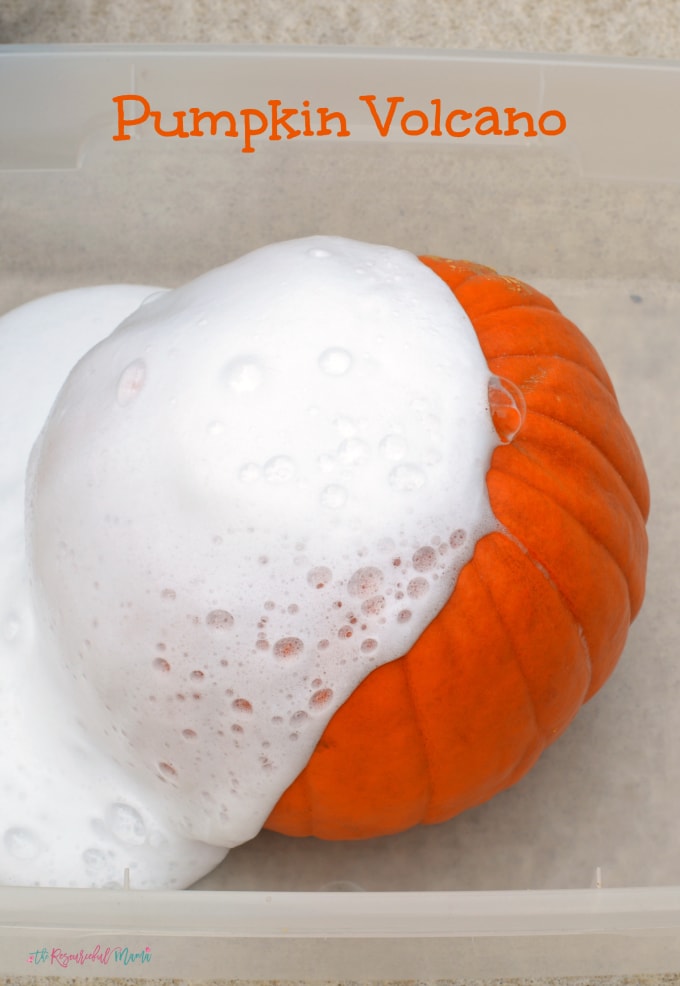
Have a leftover Halloween pumpkin or two? This pumpkin volcano project from The Resourceful Mama blog shows you how to create a volcanic explosion inside a pumpkin. All you need is a medium pumpkin, baking soda and vinegar for the reaction, dish soap to make it foam and a container to mitigate any ‘volcanic’ fizz overflow.
2. Volcano rainbow
This rainbow volcano experiment is perfect for younger kids who love color play — and it’s not too complicated. As creator Sarah Britton shows on her TikTok @beyondtheplayroom, the rainbow volcano only requires six small cups on a tray, lemon juice, food coloring and baking soda. Fill the cups with lemon juice and then put a few drops of food coloring in each cup, one for every color of the rainbow. Then add a spoonful of baking soda to each cup and watch the rainbow magic happen!
3. Sandbox volcano activity for kids
If you have access to a small sandbox, you can try this sandbox volcano experiment I used to do with preschoolers. Have the kids help you build a sand volcano, making sure to leave it as hollow as possible in the center (this video from Little Bins for Little Hands provides a good visual and uses an empty plastic bottle in the middle). Pour vinegar into the center of the volcano. Add baking soda and watch the volcano erupt! This one is especially fun for younger ones because it’s easy to do over and over again, as they might request (or demand).
4. Dirt volcano experiment
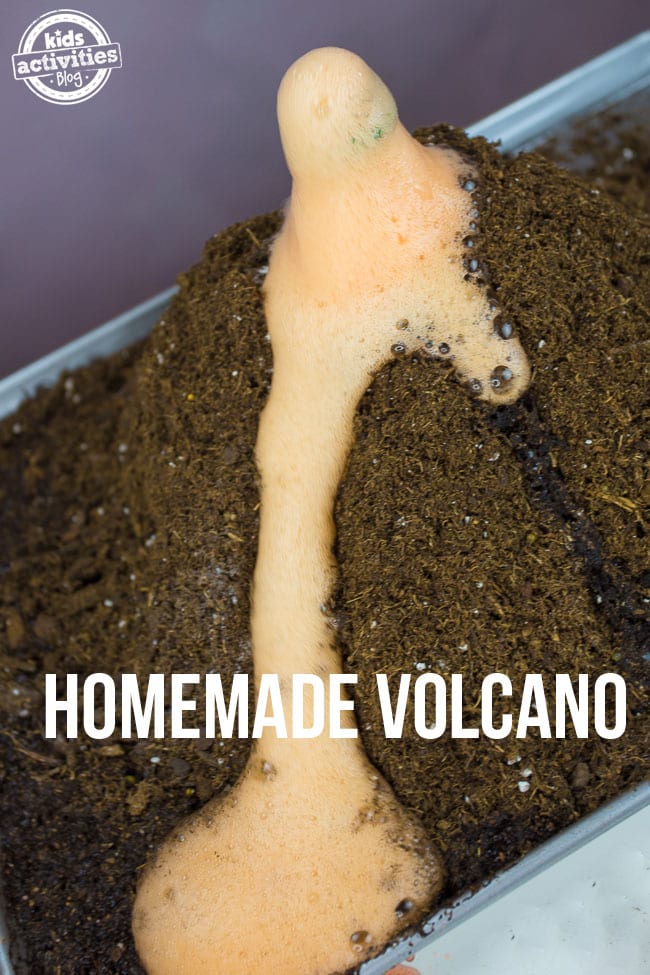
Similar to the sandbox volcano, but this experiment calls for a little fresh dirt instead. Fill a bin with dirt and use it to build your volcano — or just do the whole experiment in a dirt area outside. Check out the Kids Activities Blog for a step-by-step tutorial. You’ll need an empty plastic bottle, red and orange food coloring, baking soda and vinegar to make the perfect realistic dirt volcano.
5. Glitter volcano activity
Put a sparkly twist and a whole new level of excitement on the classic volcano experiment by adding glitter. Check out this glitter volcano video from ABCMouse.com.
According to Dana Oliver, adding glitter to a volcano experiment “can also change the consistency and appearance of the ‘lava’ if you’re looking to add a burst of creativity to the project.”
Read more:
Volcano experiments for older kids
1. Paper mache volcano
This classic paper mache volcano experiment requires a little more focus and persistence, making it perfect for older kids. Ryan’s World shows how to use a bottle, glue and paper strips to create a paper mache masterpiece. While it may require more time to create, the payoff of watching the eruption is well worth it.
2. Foil volcano experiment
If paper mache glue sounds too messy, you can create a similar volcanic project using tinfoil. This TikTok from creator @stemwithm breaks down how to do a simple foil volcano experiment. You’ll still build a mountainous shape around a plastic bottle, but you use foil instead of paper strips to create a metallic base for an explosion. You can add dish soap to the vinegar to make an extra bubbly explosion once the baking soda is added.
3. Elephant toothpaste volcano science experiment
Achieve an extra foamy volcanic eruption (often referred to as “elephant toothpaste” because it looks like a giant squeeze of toothpaste) by using slightly different ingredients for your reaction. Rather than using baking soda and vinegar, swap in hydrogen peroxide and dry yeast to create this effect.
“A hydrogen peroxide and dry yeast concoction will create a more active and showier explosion,” says Oliver. She adds that “with these kinds of materials, it’s best to use eye protection and keep it safe, as with any super-fun science experiment!”
4. DIY painted volcano activity
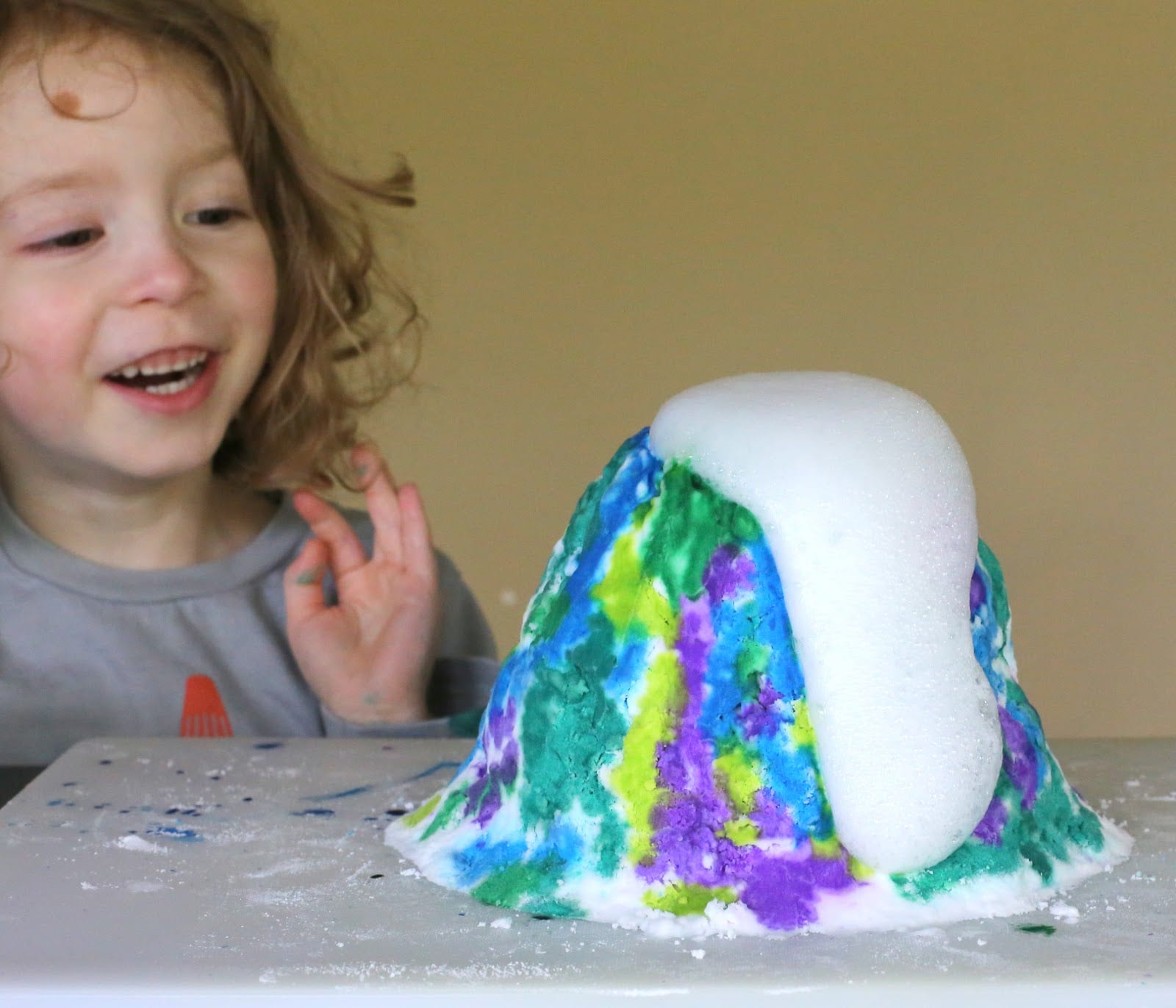
This art project turned volcano experiment from Fun At Home With Kids is as fun to make as it is to watch erupt. The colorful foaming volcano is made out of baking soda and water, which leads to an extra fun explosion when you add vinegar in the center. And the best part? Kids can have fun painting the baking soda volcano before watching the colors melt together during the eruption.
5. Glow-in-the-dark volcano experiment
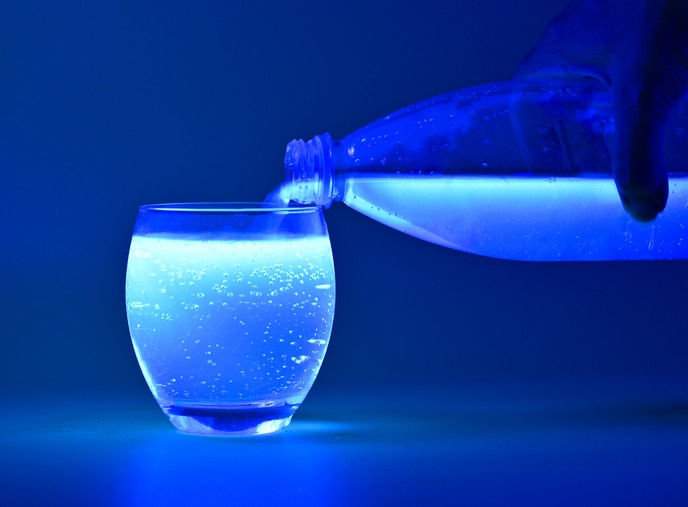
Becky Ward, education experience specialist at Tutor Doctor, suggests trying out a glow-in-the-dark lava for your next volcano experiment. According to Ward, you can mix tonic water with vinegar (use extra vinegar for the experiment because the tonic water will dilute it). Then move to a dark room equipped with a black light, pour the vinegar/tonic over the baking soda and watch it glow.
“This is an experiment that can teach students about fluorescence, the light spectrum and chemical reactions,” explains Ward.
6. Snow volcano activity for kids
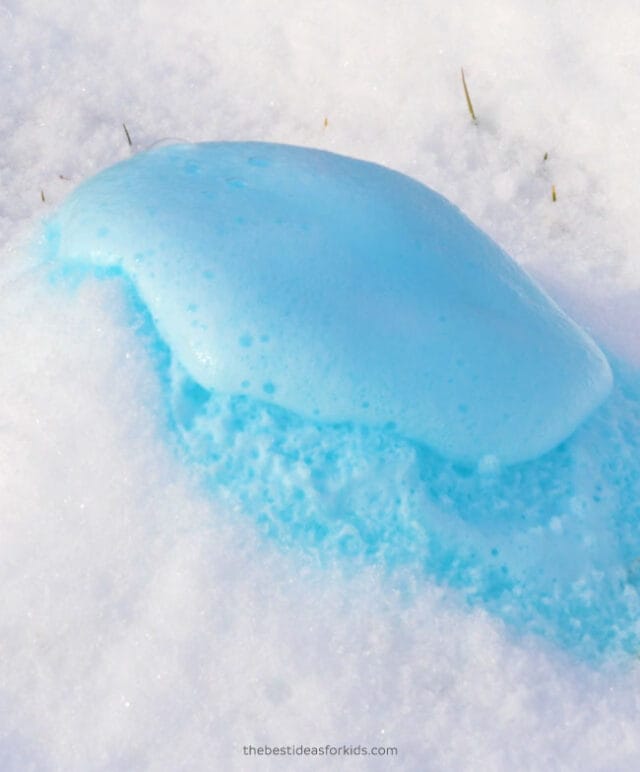
On a snowy day, try this snow volcano experiment from Kim McLeod, who runs The Best Ideas For Kids blog. Build a volcano shape out of snow and use a cup to hold your baking soda and vinegar concoction in the center of the snow volcano. Don’t forget to add blue food coloring for an extra icy effect!
Read more:
Minimal mess volcano experiments
1. Volcano in a bag
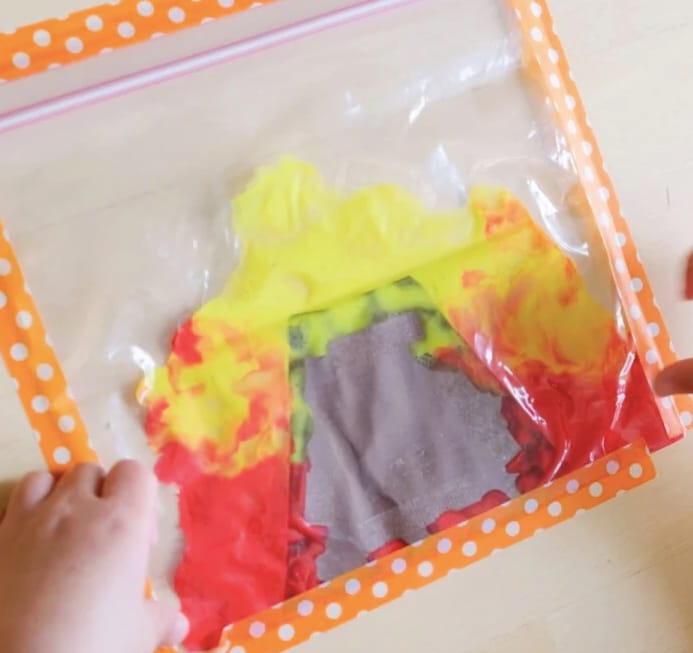
While this volcano-in-a-bag project doesn’t necessarily include an explosion, it simulates a volcanic eruption using paint — and it all happens inside of a sandwich bag! On the Happy Tot Shelf blog, learn how to set up this mess-free experiment that teaches about volcanoes and color-mixing at the same time.
2. Underwater volcano activity
Keep the mess to a minimum by trying this underwater volcano project from Cool Science Experiments Headquarters. First, fill a bottle with hot water and red food coloring and attach a string to the top of the bottle. Then, fill a clear tub with cold water and lower the bottle into the water using the string. The hot water will rush out of the bottle to the top of the tub, creating an eruption-like effect.
3. Homemade lava lamp
Did you know you can make a DIY lava lamp at home from household materials? Based on this tutorial from PBS Parents, all you need is a jar, water, cooking oil, food coloring and an Alka-Seltzer tablet. Fill the jar with water and a few drops of your favorite color. Add several drops of oil and then close the jar, making sure it’s tight enough not to spill. Turn the jar over and over and watch the bubble move through the colorful water, just like a lava lamp.
4. Citrus volcano experiment
This citrus volcano experiment can all be contained on a plate or in a small bin, making it relatively mess-free.
“Cut a lemon or orange in half, squish the fruit inside with a spoon to release the juice, scoop out a bit of the fruit to make space, add baking soda,” explains Ward. “Squeeze the fruit to make it really overflow.”
Take a look at this video from Science Buddies to see how it can be done.
